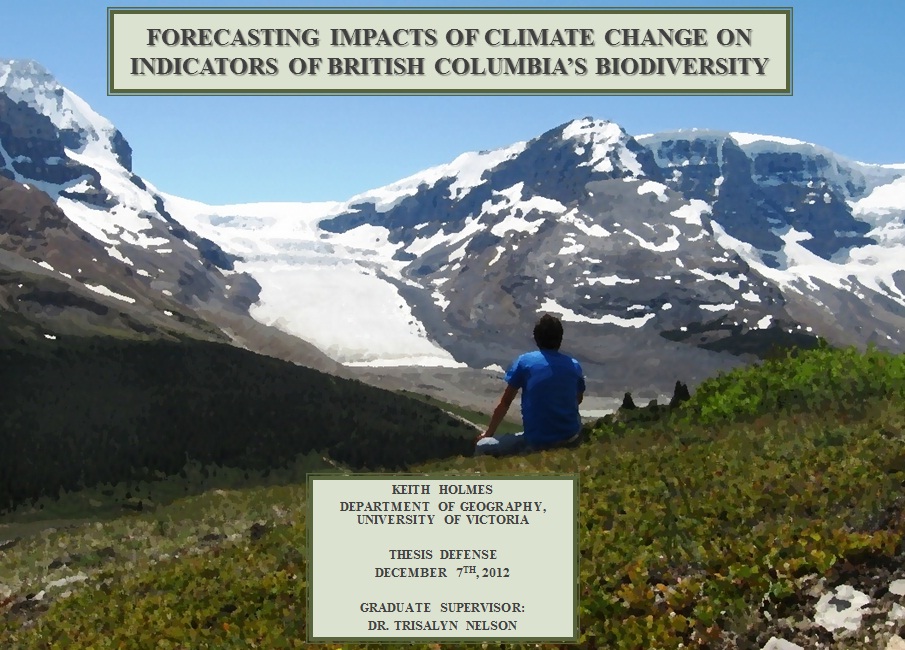Masters Thesis:
 Thursday, November 8, 2012 at 2:06PM
Thursday, November 8, 2012 at 2:06PM My Thesis:
Forecasting Impacts of Climate Change on Indicators of British Columbia's Biodiversity:
https://dspace.library.uvic.ca:8443//handle/1828/4353
Thesis Abstract:
Understanding the relationships between biodiversity and climate is essential for predicting the impact of climate change on broad-scale landscape processes. Utilizing indirect indicators of biodiversity derived from remotely sensed imagery, we present an approach to forecast shifts in the spatial distribution of biodiversity. Indirect indicators, such as remotely sensed plant productivity metrics, representing landscape seasonality, minimum growth, and total greenness have been linked to species richness over broad spatial scales, providing unique capacity for biodiversity modeling. Our goal is to map future spatial distributions of seasonality, minimum cover, and cumulative vegetative growth based on expected climate change and to quantify anticipated change to park habitat in British Columbia. Using an archival dataset sourced from the Advanced Very High Resolution Radiometer (AVHRR) satellite from the years 1987 to 2007 at 1km spatial resolution, corresponding historical climate data, and regression tree modeling, we developed regional models of the relationships between climate and annual productivity growth. Historical interconnections between climate and annual productivity were coupled with three climate change scenarios modeled by the Canadian Centre for Climate Modeling and Analysis (CCCma) to predict and map productivity components to the year 2065. Results indicate we can expect a warmer and wetter environment, which may lead to increased productivity in the north and higher elevations. Overall, seasonality is expected to decrease and minimum cover is expected to increase in productivity. The Coastal Mountains and high elevation edge habitats across British Columbia are forecasted to experience the greatest amount of change. In the future, protected areas may have potential higher greenness and lower seasonality as represented by indirect biodiversity indicators. The predictive model highlights potential gaps in protection along the central interior and Rocky Mountains. Protected areas are expected to experience the greatest change with indirect indicators located along mountainous elevations of British Columbia. Our indirect indicator approach to predict change in biodiversity provides resource managers with information to mitigate and adapt to future habitat dynamics. Spatially specific recommendations from our dataset provide information necessary for management. For instance, knowing there is a projected depletion of habitat representation in the East Rocky Mountains, sensitive species in the threatened Mountain Hemlock ecozone, or preservation of rare habitats in the decreasing greenness of the southern interior region is essential information for managers tasked with long term biodiversity conservation. Forecasting productivity levels, linked to the distribution of species richness, presents a novel approach for understanding the future implications of climate change on broad scale biodiversity.


Reader Comments